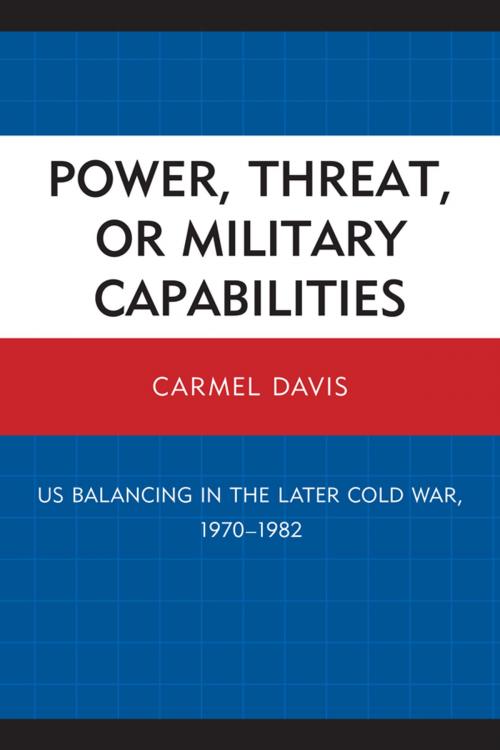Power, Threat, or Military Capabilities
US Balancing in the Later Cold War, 1970-1982
Nonfiction, History, Asian, Russia, Social & Cultural Studies, Political Science, International, International Relations, Military, United States| Author: | Carmel Davis | ISBN: | 9780761855521 |
| Publisher: | UPA | Publication: | November 25, 2011 |
| Imprint: | UPA | Language: | English |
| Author: | Carmel Davis |
| ISBN: | 9780761855521 |
| Publisher: | UPA |
| Publication: | November 25, 2011 |
| Imprint: | UPA |
| Language: | English |
Power, Threat, or Military Capabilities assesses two mainstays of international relations, balance of power and balance of threat, using the case of US balancing against the Soviet Union in the later Cold War. It also proposes balance of military capabilities, which uses offense-defense theory to argue that countries balance against the ability of others to conquer or compel them.
Power, Threat, or Military Capabilities finds that the US was more powerful than the Soviet Union so US behavior is not explained by balance of power. The US did not perceive the Soviet Union as likely to initiate war or to run risks that might lead to war so US behavior is not explained by balance of threat. This book determines that the US was concerned about its ability to defend Europe and the Persian Gulf so US behavior is explained by balance of military capabilities.
Power, Threat, or Military Capabilities assesses two mainstays of international relations, balance of power and balance of threat, using the case of US balancing against the Soviet Union in the later Cold War. It also proposes balance of military capabilities, which uses offense-defense theory to argue that countries balance against the ability of others to conquer or compel them.
Power, Threat, or Military Capabilities finds that the US was more powerful than the Soviet Union so US behavior is not explained by balance of power. The US did not perceive the Soviet Union as likely to initiate war or to run risks that might lead to war so US behavior is not explained by balance of threat. This book determines that the US was concerned about its ability to defend Europe and the Persian Gulf so US behavior is explained by balance of military capabilities.















